Looking for cheap multimeters I found the Zoyi ZT-300AB, for about €20 we have a more than interesting device that includes a Bluetooth interface to take readings through a tablet or mobile. Zotek Instruments has provided me with a unit for your analysis.
You can read this post in spanish.
The arrival
The multimeter comes in a smooth cardboard box that is fully screen printed. On the front there is a photo of the multimeter and a mark that indicates a one year warranty (is it legal in Europe to limit the warranty to one year?). Not much more information comes, only a sticker in one corner informs us that it is a multimeter (DMM, for its acronym in English) with bluetooth and a QR code to access the download of the application.
The device comes with its corresponding test leads, temperature probe, instructions (in English) and a soft-touch gray carrying bag with a multimeter silkscreen print.
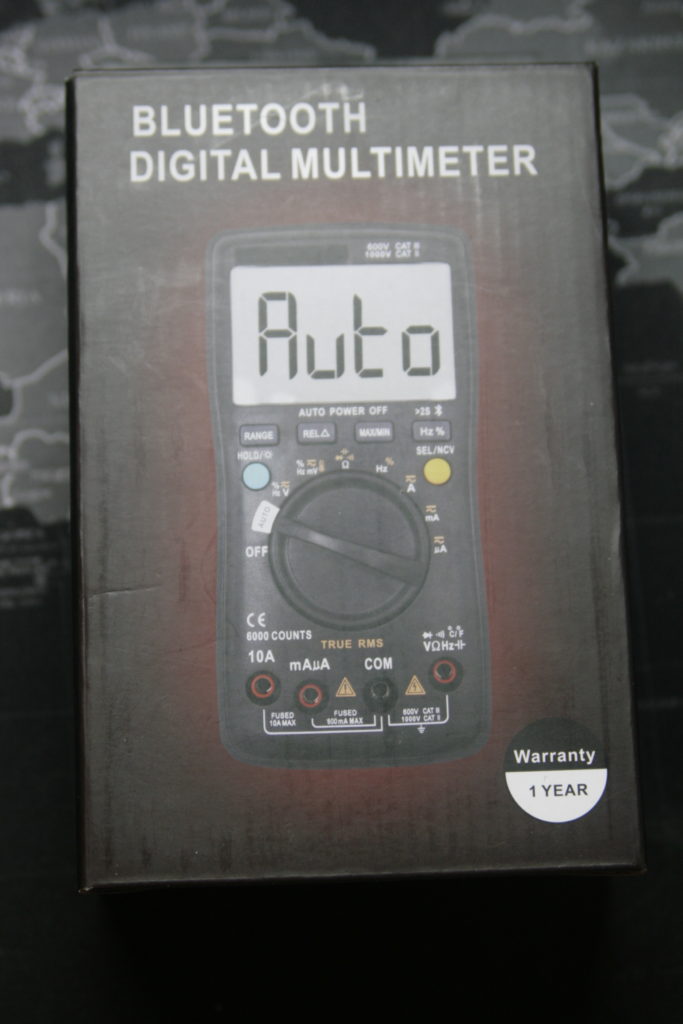
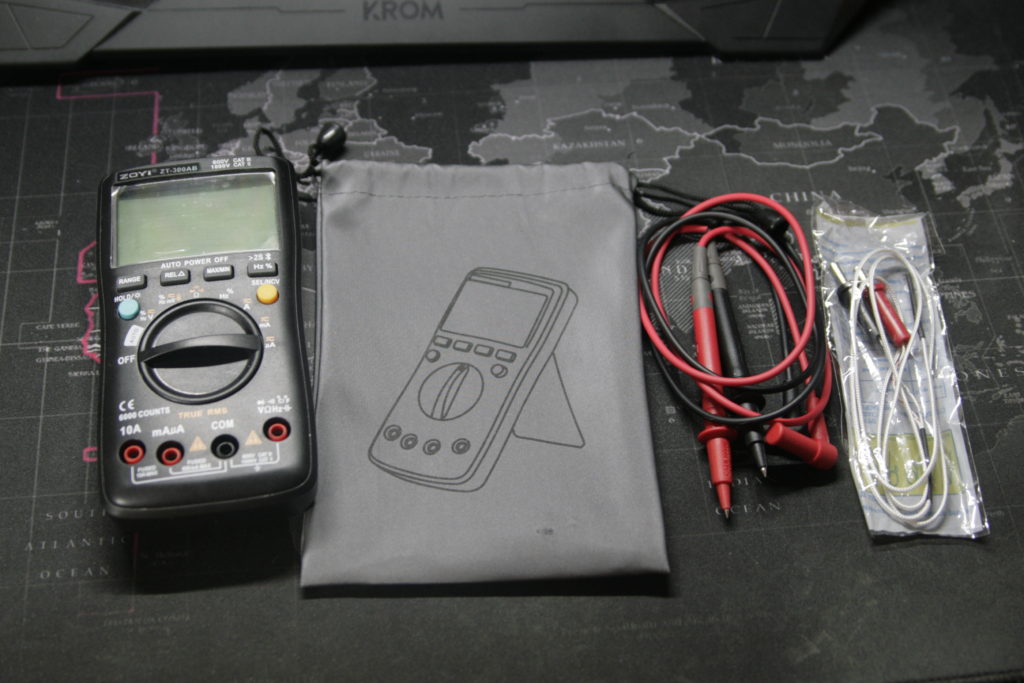
The device
The multimeter has a size that we could classify as small, 81mm wide, 161mm high and 39mm deep. The ABS-type plastic of the housing seems sufficiently resistant to impacts and small drops. In the hand it is comfortable, being barely larger than the palm of my hand. The 250 gr of weight denotes the reduced size of its measurements.
On the front, in addition to the screen, we have six buttons (four rectangular and two round), the rotary selector and the input terminals. The power on is carried out by means of the rotary selector, a system that I like. The buttons are made of a rubber that is pleasant to the touch and easy to use, even though they are small in size. Everything about this device is small in size, which makes parts like the rotary selector seem difficult to use, yet maintains adequate ease of use and grip.
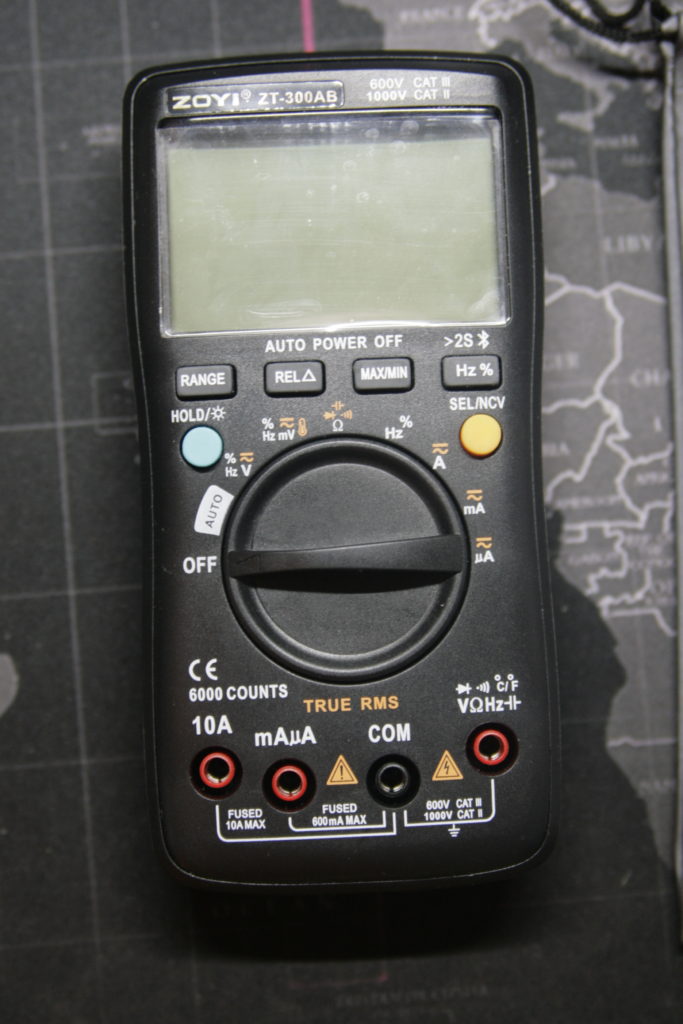
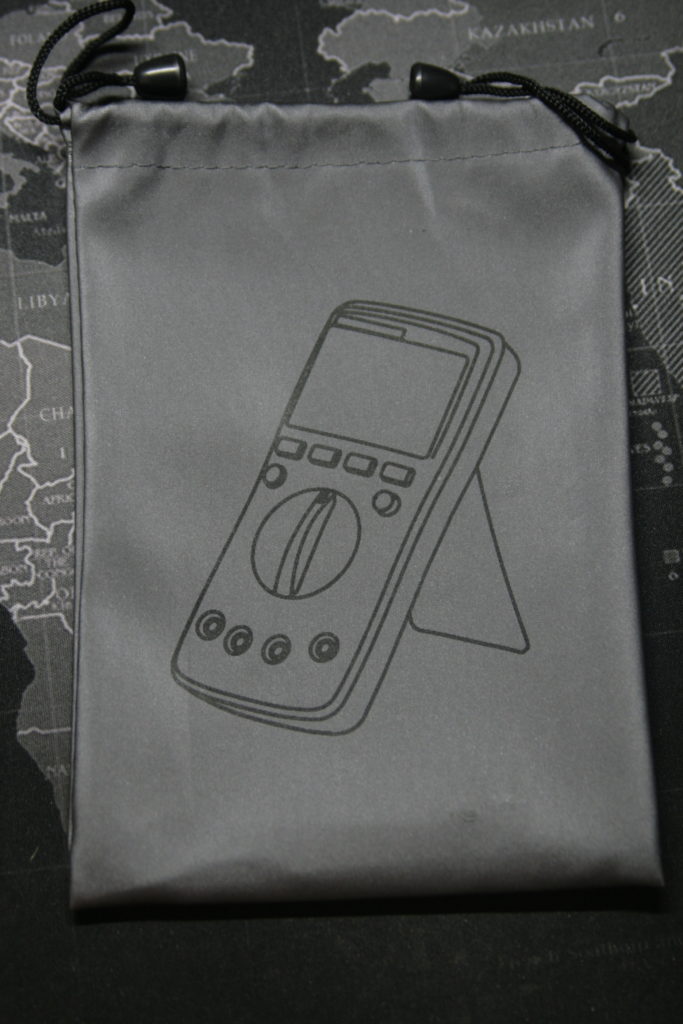
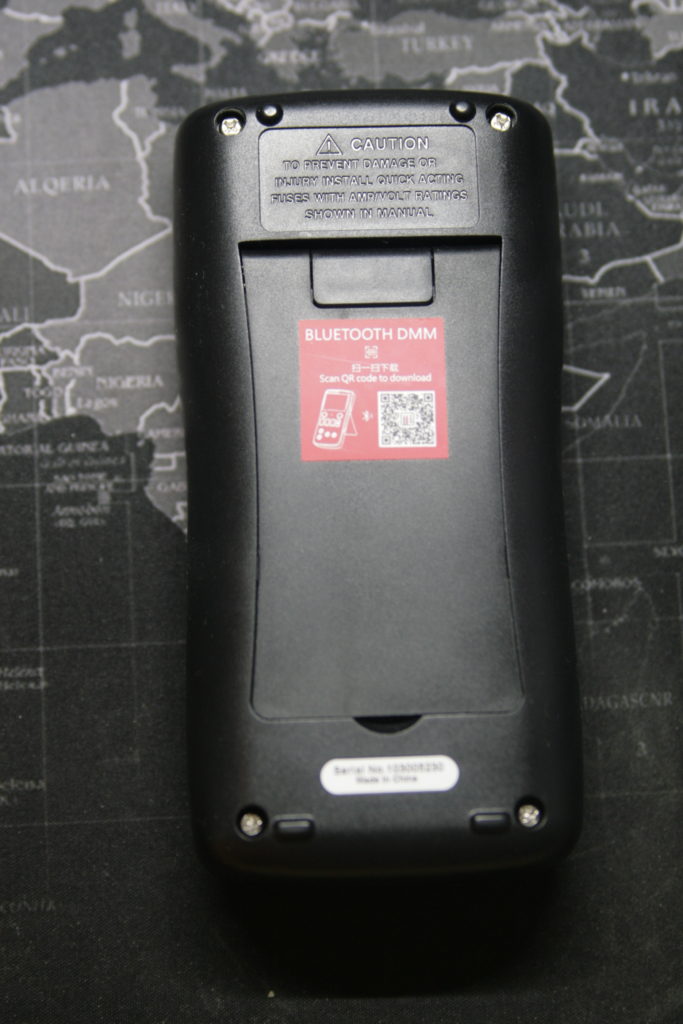
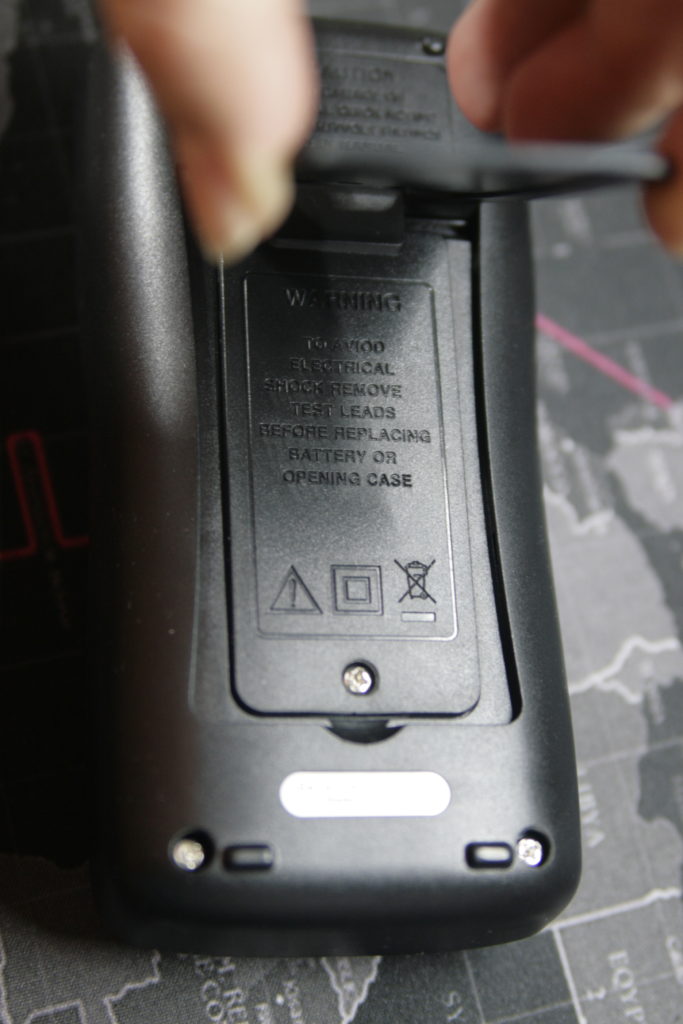

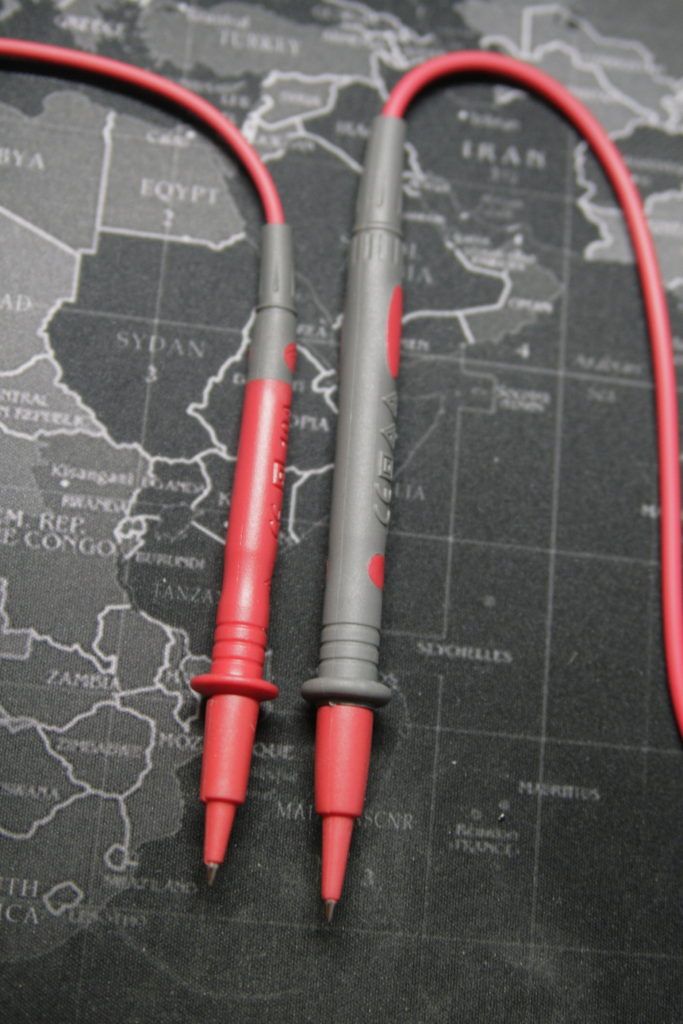
At the back we find the relevant folding support to put the multimeter upright. In this support we find a sticker with the QR code to download the mobile application. Lifting the folding support we find the compartment for the batteries, two of type AA. To open the battery compartment you have to unscrew the relevant screw, but we are surprised that with the lid of said compartment we also lift the folding support. This gives us full access to the batteries, replacing the lid and the folding support is not complicated. I found it to be an ingenious and practical solution since, due to the size of the multimeter, I was afraid of difficult access to the batteries and with this solution changing the batteries is very easy.
The test leads are of acceptable quality, they have a snap-on cap that covers the entire tip except for a couple of millimeters for when we measure with voltages of more than 30 V. The tips are small, although the connector is standard and Allows you to use any other normal size tip. The metal tip of the test leads are also of standard diameter, allowing us to use normal accessories if we have them.
The specifications
The first thing we need to know about a multimeter today is what category of overvoltages the device is certified for, in this case it is CAT-III 600 V / CAT-II 1000 V, which makes it suitable for general electricity and electronics.
It is an automatic range device and, how could it be otherwise, we have the three fundamental measurements: AC / DC voltage, AC / DC current and resistance / continuity. We also have: diode test, frequency, duty cycle, temperature and capacitance.
Other functions that we have are: backlit display, value hold, relative value, maximum value and minimum value.
In general we can speak of a multimeter of good precision with a resolution better than ± (1.5% + 3) in the most important scales. Also, the multimeter’s counter is 6000 counts, which is very good.
Their ranges and sensitivity for voltage and current measurements are the usual ones in multimeters for electronics. It does not make much sense that it describes all the ranges, resolutions and precision of the scales, you can consult it more comfortably in the summary table of the manual.
The functions
The list of available functions is as follows:
- Automatic mode
- Bluetooth
- NCV
- Diode test
- Frequency / Duty Cycle
- Temperature
- Retention of value (Hold)
- Relative value
- Maximum / minimum value
The automatic mode is a mode in which the without changing anything in the multimeter automatically recognizes if we are measuring voltage, resistance or continuity. I have not tested it exhaustively since it is not an option that particularly appeals to me, nor do I see much use for it in a multimeter of this type. I will also have the opportunity to test it in depth with the Zoyi ZT-5B.
The possibility of using a mobile phone or a tablet to record measurements has always been very attractive to me, since I am going to have the opportunity to test three devices that communicate with the same application and I will dedicate an article exclusively to it.
The NCV (Non Conctact Voltage) function or non-contact voltage test allows us to determine where the electrical conduits are going or if a cable is under voltage or not.
Tests
The first test that I usually perform on multimeters is the resistance measurement and I do it with a matrix of 7 decades of 1% precision resistors. Whenever I put a multimeter in resistance measurement I measure the resistance of the test leads by short-circuiting them and seeing the resistance they give, being typical values of 0.1 Ω or 0.2 Ω. The first surprise has been when I have seen a value of 0.0 Ω. When measuring the 1.0 Ω resistance, the value obtained was 0.8 Ω, 20% lower, well above the 1% tolerance of the resistance and ± 0.5% of the relative error of the device. However, the absolute error is ± 3, and therefore we have 0.8 Ω ± (0.5% + 0.3) ≈ 1.0 Ω ± 1%, that is, within the precision range. From what I have been able to see in my tests, it may be an excess in the calibration, that trying to read a 0.0 when the test leads are short-circuited leads to an absolute error of 2 counts. In general it is not something worrisome, but it must be taken into account with values lower than 10 Ω. One positive note is that resistances up to 60 MΩ can be measured.
The direct voltage (DC V) measurement test has been shown to have better than specified accuracy. Again I have been able to observe an absolute error of +2 counts almost constant throughout the tested range (from 1.5 V to 34 V).
In direct current (DC A) the precision up to 4 A is better than that specified and up to 8 A it is within the error margins specified in the manual. I have not been able to accurately measure the error above 8 A. Taking into account that the maximum is 10 A, that currents of that intensity can only be measured for a few seconds and that the normal for these current values is Using a clamp meter, we can say that the DC current measurement is reliable and sufficient.
In alternating voltage (AC V) I have verified the behavior of the real effective value (TrueRMS) with different types of wave at different frequencies, being within specifications up to frequencies somewhat above 1 kHz, the precision falling rapidly above 1.5 kHz. I have also verified that the advertised precision is met (even above the specifications) in the range of 40 mV to 12 V (sine wave at 50 Hz).
In alternating current (AC A) the accuracy is within specification (somewhat better, in fact) for the mA ranges. In the ranges of A and for currents from 0.1 A to 2 A tested, the accuracy has improved significantly.
I have tried capacitor measurement with some capacitors that I had stored from about 22nF up to 2.2mF. I have not calculated the margin of error because I do not have a device with sufficient precision with which to compare the measurements, however the measurements have been compatible with the captions of the capacitors and very close to the measurements that I have obtained with another multimeter.
These last measurements, those of AC voltage / current and those of capacitors, are new tests that it has taken me a while to have available, still as rudimentary as I have done. I hope to improve these tests in the future.
Conclusions
The ZT-300AB is an ideal multimeter for students, electronics and robotics enthusiasts, DIY enthusiasts, or as a second multimeter.
For about €20 we get a small device that measures the usual magnitudes with acceptable precision. It adds the non-contact detection of voltages (NCV) and the mobile application. A student or a hobbyist of electronics / robotics does not need more and its size is advantageous. For a professional, it can be a good candidate for a second multimeter, especially if you travel and want or need to take a device with you.

Impresionante como ha mejorado el rendimiento de la página.